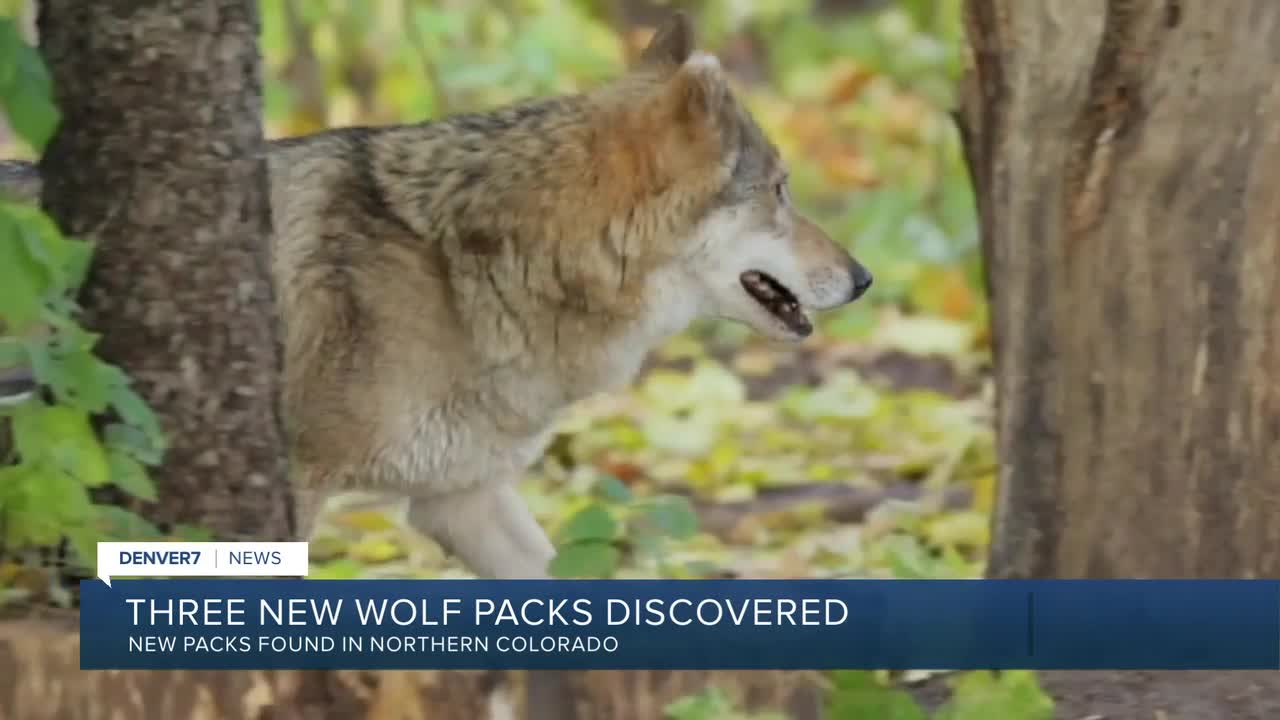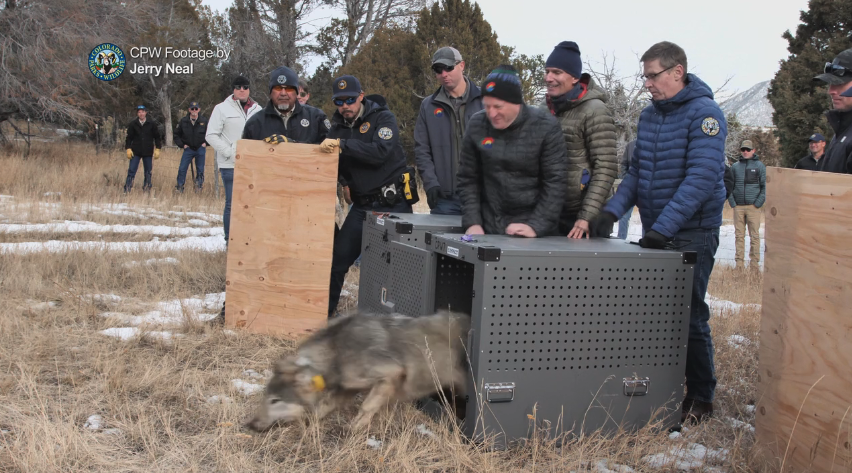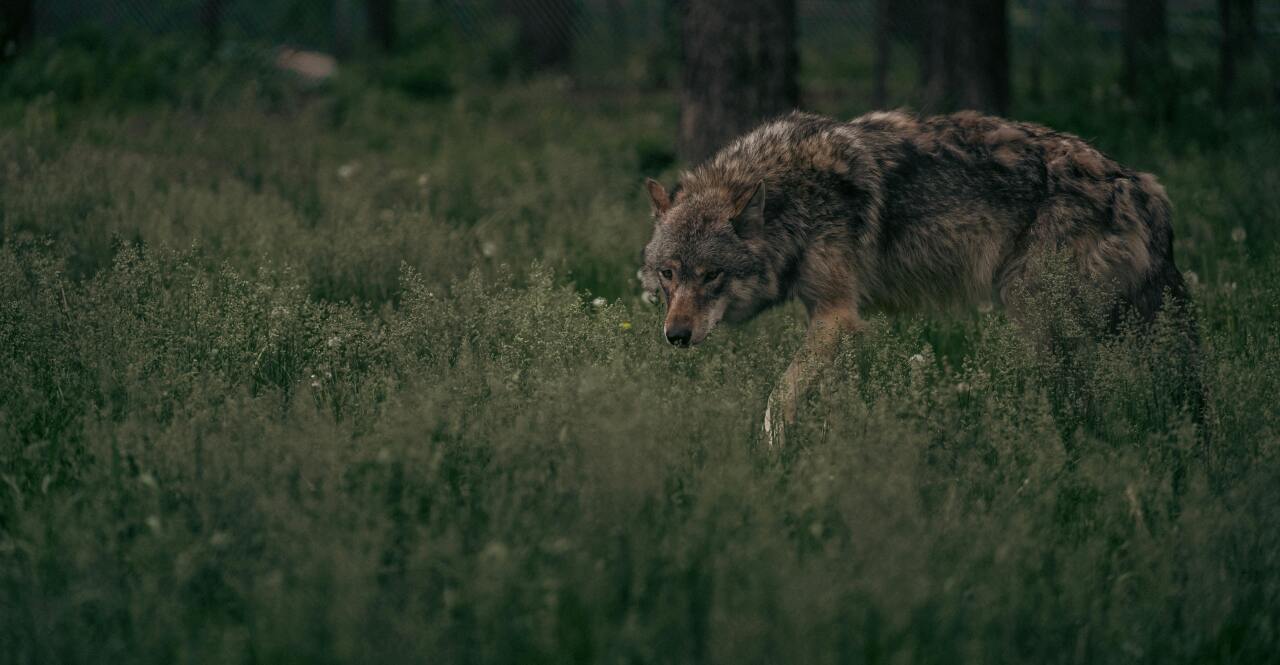Colorado is officially home to three new gray wolf packs in addition to the Copper Creek Pack.
According to an update published online ahead of this week's Colorado Parks and Wildlife (CPW) Commission meeting, the following new wolf packs have been confirmed:
- One Ear Pack in Jackson County
- King Mountain Pack in Routt County
- Three Creeks Pack in Rio Blanco County
This is in addition to the Copper Creek Pack in Pitkin County. This pack is much more central compared to the three new packs, which are in northern Colorado.

Denver7 reached out to CPW on Monday to learn more about these packs and their makeups, but the agency said it is not doing interviews about the new packs until after this week's commission meeting.
The confirmation of these new packs is not unexpected — CPW staff said in mid-June that it had been monitoring den sites for weeks and had seen new pups.
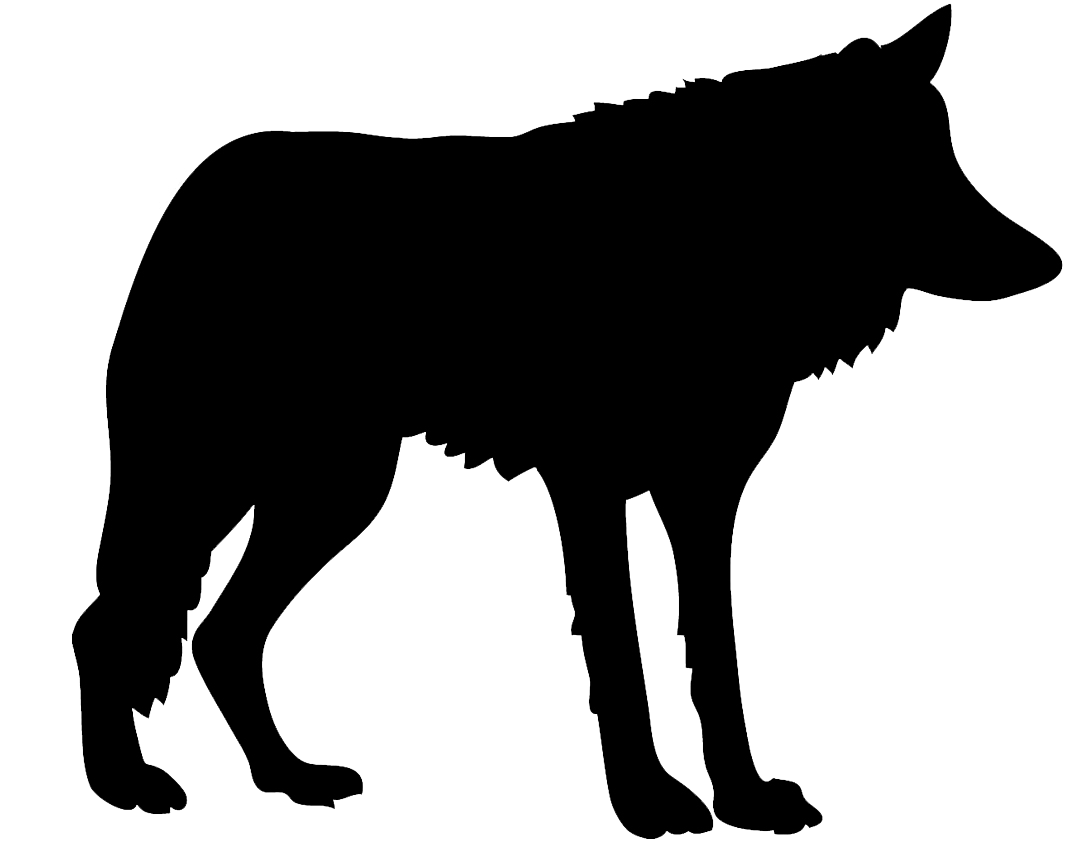
When you can learn more about these packs
The CPW Commission meeting, where more information will be shared about the three new wolf packs, is scheduled for Thursday and Friday.
CPW's Assistant Director of Terrestrial Branch Brian Dreher and Wolf Conservation Program Manager Eric Odell are set to provide more details on the wolf program as a whole, including the new packs and pups, mortalities, movements this year and plans for the program in 2026.
In addition, the commission will discuss two wolf damage claims which CPW is recommending for denial, according to meeting documents. One is for $100,000 and the second totals about $34,000.
As of publishing time, 11 wolf depredations have been reported and confirmed by CPW in Colorado in 2025.
Denver7 will cover Thursday's meeting and bring you the latest on these developments.
At the previous CPW Commission meeting last week, the Copper Creek Pack — the only official wolf pack in the state at the time — was in the spotlight. In May, CPW officials shot and killed one of the yearling male wolves in the pack after a series of attacks on livestock. At the July 7 virtual meeting, the commission solidified its decision not to direct CPW to take any action on the wolf pack for now after recent depredations, saying it is outside the commission's responsibilities.

Pack now calls Rio Blanco County home after CPW removed it as potential release site in 2024
When deciding on a location for the 2025 wolf releases, CPW initially said it considered Rio Blanco County, Garfield County, Eagle County and Pitkin County in November, and staff met with county commissioners and other leaders.
However, CPW later removed Rio Blanco County from that list because of the limited number of release sites, proximity to livestock and potential impacts to elk and deer herds recovering after the harsh winter of 2022-2023, CPW said in its November 2024 update.
The county is now home to the new Three Creeks Pack.
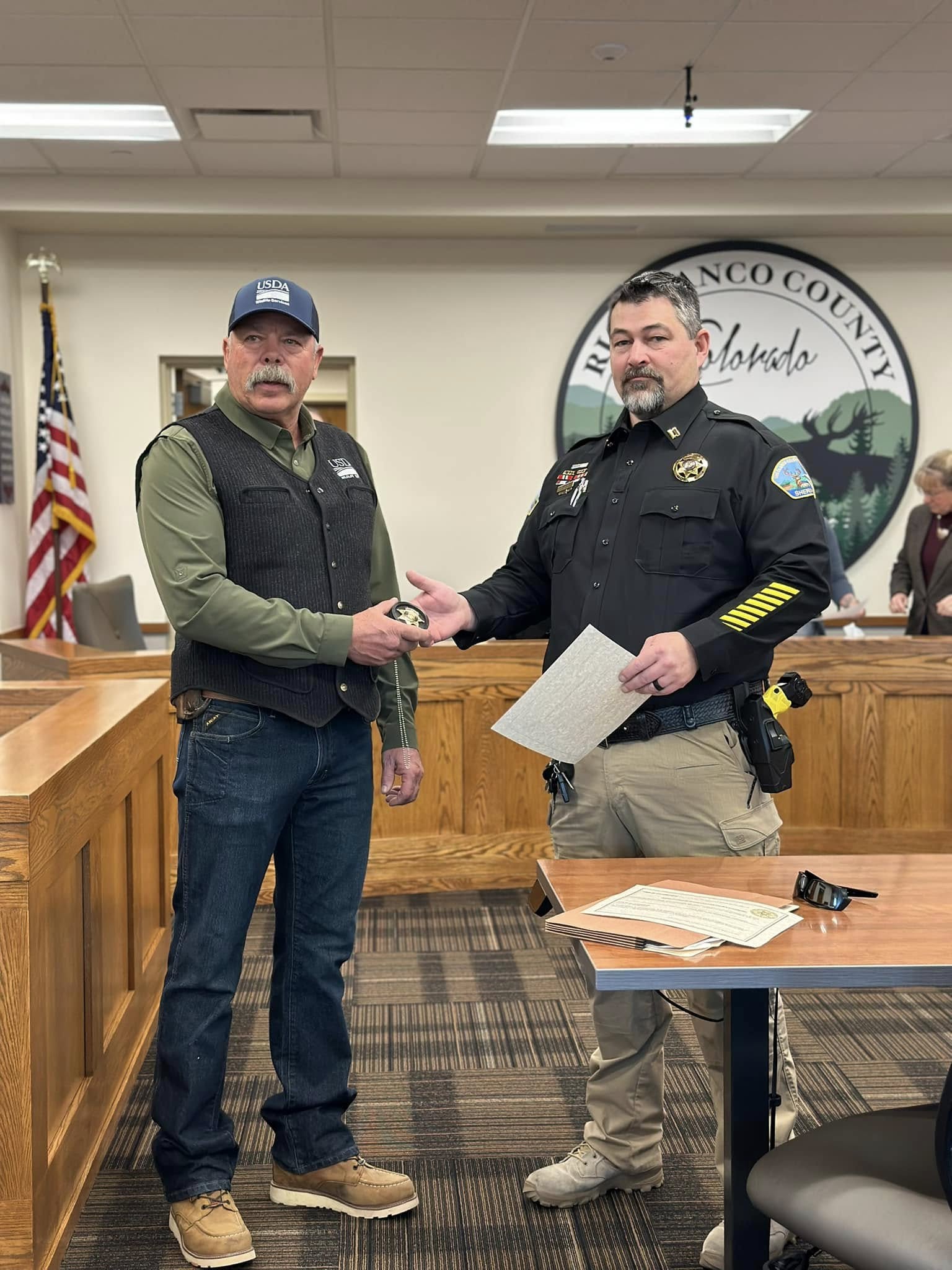
This past January, as part of the wolf reintroduction program in Colorado, 15 wolves were translocated from British Columbia to Colorado and were released in Pitkin and Eagle counties. Wolves travel large distances and were expected to do so in Colorado after their release.
In March, the Rio Blanco County Sheriff's Office swore in Justin Ewing as the animal and livestock conflict investigator for the county.
"Justin's extensive experience with wolf issues and other wildlife depredation, combined with his deep understanding of our landscape and community, and his familiarity with CPW staff, make him an invaluable asset," the sheriff's office posted on Facebook in March.

Biology of wolf packs and pups
Denver7's Stephanie Butzer met with Brenna Cassidy, CPW's wolf monitoring and data coordinator, this spring at Lory State Park to learn more about wolf pack formation, breeding and pups.
You can watch full clips from our interview with Brenna in the video below, where she explains CPW's goal with wolf packs, how the animals chose where to den and pup survival rate.
Wolves are very good at finding each other on the landscape, she explained. When they do meet, sometimes they pair up and other times they do not. Once they mate, they start searching for a den site.
"Dens can be a couple different things," Cassidy said. "Usually they're something that looks like kind of a classic hole in the ground, usually somewhere very secluded, somewhere really close to water... A lot of people out there know that lactation takes a ton of water. So, dens are usually within, you know, a quarter mile at most of some sort of water source."
Dens aren't only holes in the ground — they can be formed under a jumble of fallen trees or a reused coyote den.

"A female will travel and she will hunt and she will do some pretty incredible movements right up until she gives birth," Cassidy said. "So, she will be traveling all around and then all of a sudden, she will jet back to her den site, go into the den, the rest of her pack and her mate will probably follow her."
Wolves give birth to four to six pups on average. The mother wolf will spend a lot of time in there while her mate brings her food. He will eat it and regurgitate it for her, Cassidy said.
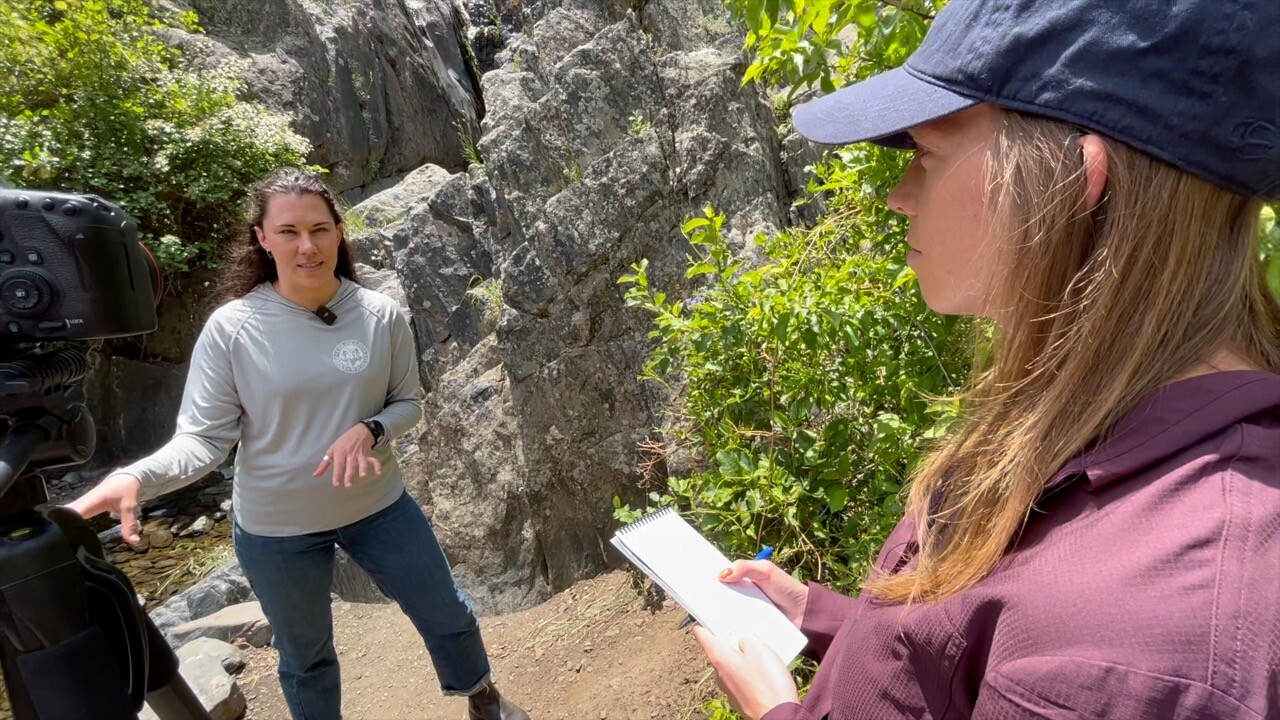
"Over several weeks to a month or so, the pups will start to peek out, look around, but they're really kind of sticking on what we call the den porch," she said.
After this, the wolves will move to a rendezvous site in late June or July, which are protected areas away from disturbances and close to water and shade. It allows for more space for the wolf pups.
"Maybe it's in a nice wet meadow or grove of aspen, something like that that has water, has shade, has a little bit of protection from other animals and things like that," Cassidy said. "And it's kind of the same thing as a den area, except there's no hole in the ground."
Denver7 has been following Colorado's wolf reintroduction program since the very beginning, and you can explore all of that reporting in the timeline below. The timeline starts with our most recent story.
About half of the pups will survive into the following spring.
"It's tough in that first year of life," Cassidy said. "They're pretty vulnerable early on, and then they have a lot to learn when they start to travel with the pack in the fall... It's kind of dangerous in the first year of life for a pup, so 50% or 60%, if they make it to the next spring, is about average."
They need to learn how to hunt, interact with other wolves and avoid humans, she said.
Denver7 asked if CPW is seeking a specific number of packs and Cassidy said no, explaining that pack size differs.
"We don't have a number on the exact number of packs that we want, but you know, reproduction is the goal," she said. "You know, we can bring wolves in, we can translocate wolves, but we need them to reproduce naturally in Colorado. So we'll see what the wolves decide to do. But they are very, very good at finding each other and reproducing naturally."

The below list outlines an overview of the known wolf population in Colorado:
- Seven wolves surviving from the original 10 that were released in December 2023 (one died of a likely mountain lion attack, a second died from injuries sustained prior to his capture as part of the Copper Creek Pack relocation effort, and a third wolf became sickly and died)
- Four of the five wolf pups born in the spring of 2024 (one male was killed after multiple depredations in Pitkin County)
- 10 wolves surviving from the 15 that were released in January 2025 (one was shot and killed by Wildlife Services in Wyoming earlier this month, a second died of unknown causes in Wyoming, a third died in Rocky Mountain National Park, a fourth died in northwest Colorado and the fifth also died in northwest Colorado)
- Unknown number of pups born in four packs in 2025
- Two wolves that moved south from Wyoming several years ago
- One uncollared wolf that was last known to be in northwest Moffat County in mid-February. It is not clear if it is alive or still in the state.
- Possible, but unconfirmed, wolf in the Browns Park area as of February. It is not clear if it is alive or still in the state.



